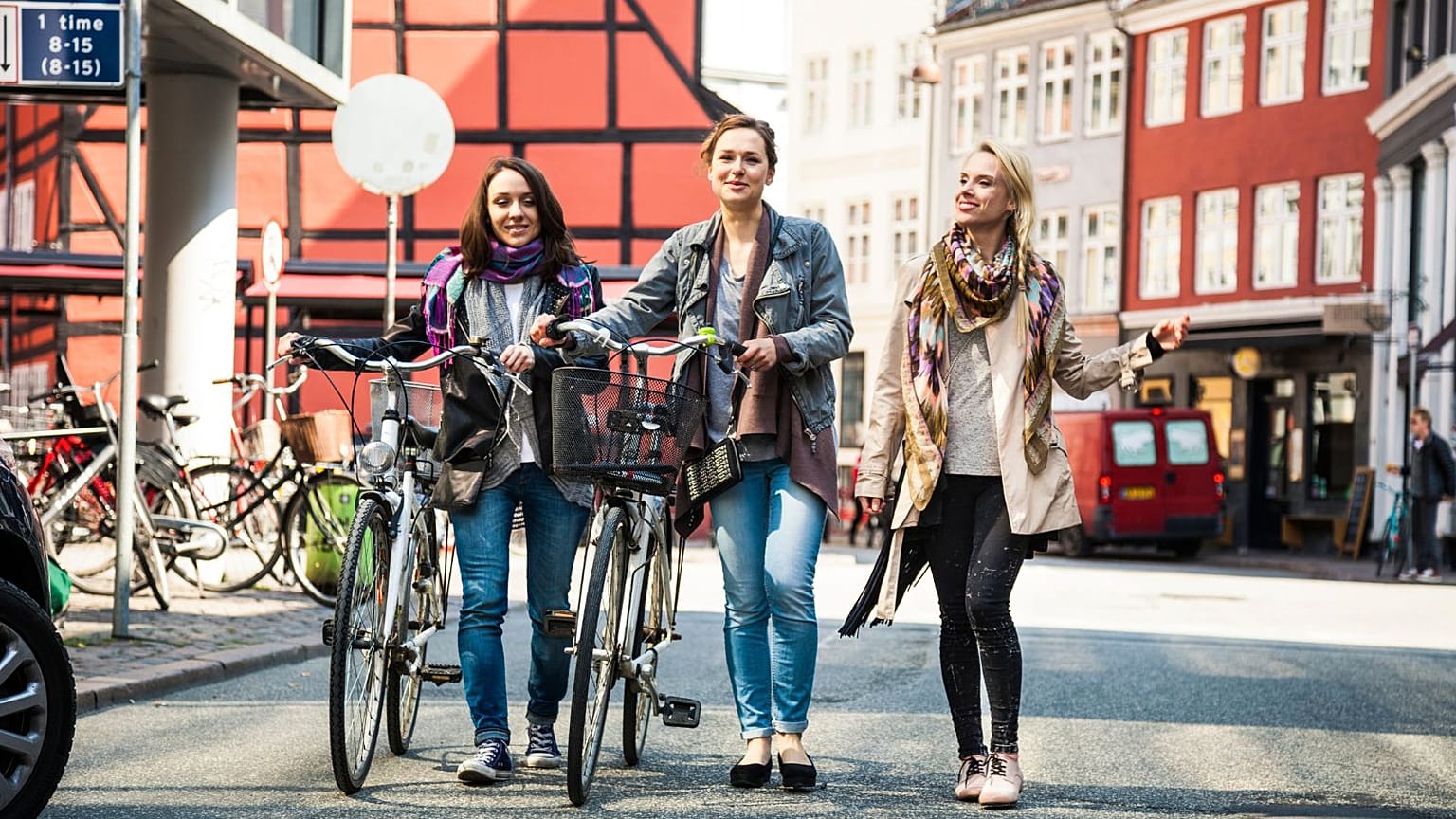Safety is one of the main reasons women avoid public transport but it’s not the only one.
When we think about sustainable mobility, the first thing that comes to mind tends to be public transport or electric vehicles (EVs).
However, some experts say that in order to be truly sustainable, cities also need to be more inclusive.
Euronews Next looked at how women’s mobility could be improved in cities.
Safety, an obstacle to women’s mobility
“A lot of women are put off using public transport in particular for safety reasons. And that's not just about public transport, but also about the city itself,” Léan Doody, Arup’s Director of Cities, Planning and Design business in Europe told Euronews Next.
Arup is an international firm providing design and architecture services. In 2020, it was commissioned to study women’s travel needs and published its 90-page report on the topic.
In Ireland, 55 per cent of women stated that they would not use public transport at night and 34 per cent of women said that feelings of insecurity have prevented them from travelling, according to Arup’s survey.
In France, the results are worse: 87 per cent of women say they have been victims of sexual harassment, sexual assault or rape on public transport, a separate survey showed.
“A single incident often has a lasting impact on women’s sense of safety and daily choices,” according to Arup’s report.
This report also gives examples of the strategies women use to feel safer such as “travelling one stop further than required to avoid an unsafe station” or “holding keys in their hand as a makeshift weapon”.
On social media, there are also videos with teens and women showing their “subway shirt”, an oversized cover-up over a more fashionable outfit in order to avoid unwanted attention.
Several countries have launched awareness campaigns about how to react to harassment. In Europe, Belgium was the first country to pass a law in 2014 making “sexist and sexual outrage” a criminal offence. Portugal followed in 2015, and France in 2018.
The ‘mobility of care’
Safety is not the only factor that impacts women’s mobility; “women tend - not exclusively but in many countries - to carry most of the burden of care,” Doody said
Indeed, according to the European Institute for Gender Equality, women are still disproportionately in charge of taking care of relatives or children in the average household.
“And that means that they need particular things for mobility,” she added.
Experts call these needs the “mobility of care”, and it is another issue women face when they need to choose a mode of transport as they tend to make more journeys.
“That is called trip chaining, where you're trying to put a lot of different journeys together, which is quite different from just a straightforward commute. Public transport sometimes does not allow for that because it's not reliable enough and it's not accessible enough,” said Doody.
Arup’s report noted that “having a child is often a turning point“ in shifting from public transport to the car and that “as children grow up, the car remains integral to the family dynamic”.
But society can still shift to more sustainable options, experts say.
What are the solutions?
“I think a really important and useful tool for that is the sort of gender audit checklist,” said Doody.
Different institutions such as the Royal Town Planning Institute or the World Bank made such guidelines available.
An example of this approach is gender mainstreaming defined by the Council of Europe as “an approach to policy-making that takes into account both women's and men's interests and concerns.”
The point is to ensure that a policy or a project enhances gender equality.
Arup and the UN highlight Vienna as an example of a city that has been committed to gender mainstreaming since 2000 with high-quality public lighting, more seating in public areas, and a pedestrian-friendly design.
It’s a method that has been proven effective as Vienna was named the world’s most liveable city in 2023 for the second year in a row.
In France, the NGO Womenability regularly collaborates with cities to audit their designs thanks to exploratory walks, a participatory approach to better understand users’ needs.
In one Swedish example, an 80-metre-long passage in Umeå was created to take into account visual awareness with natural light and safety with wide entrances.
Several European cities have also opted for “requested stops” on buses usually during the night such as Madrid in Spain. The idea is primarily to enhance a feeling of safety for female users during the last leg of their journey home.
Urban planners also recommend taking into account the mobility of care, with the presence of benches and child-friendly facilities like play areas when designing public spaces.
But in the end, gender mainstreaming favours all users including children and older individuals.
“If you provide a system that allows for access, that allows for reliability that really does benefit everyone,” said Doody.


















